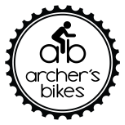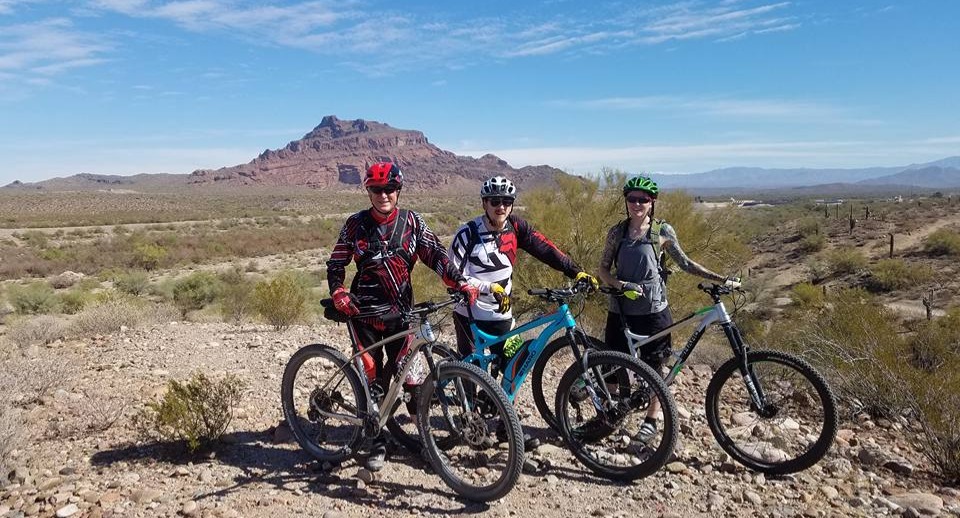Trails & Tips
Explore in and around the phoenix area to find some of the best trails. Be it easy or challenging, find bicycle rides in Arizona. Links to trail maps and guides. New to cycling - read on to prepare for your next ride.
Beginners Guide To Urban and Mountain Biking
Read on for a whole host tips, tricks, ideas, and links for trails and maps.
Arizona Riding
In Arizona, trails are everywhere. Bike paths are abundant. Ride the canal, road, or the park on any of the greenbelt areas. Riding in any of the National Forests or County Parks is a great option for mountain biking and casual riding. There is a trail for every skill level. No matter which way you go, there is a great place to take your bike nearby.
Learn more on e-bike laws: See our FAQs page.
Below, find some places to go, riding tips, and great advice to get anyone started on a mountain bike, road biking, or a beach cruiser.
Setup your MTB suspension (SAG) before you go: Suspension Setup
See you on the trail or bike path! Rent A Bike
Need A Reason To Ride
- It helps you sleep better.
- Moderates the need for Insulin for diabetics.
- It's a perfect choice to improve cardio fitness.
- It contributes to your overall health and well being.
- Burn up some calories and help maintain a healthy weight.
- Contributes to strong bones and reduced risk of bone loss.
- Increases circulation, while reducing the effects of arthritis.
- Relieve anxiety, stress and tension (get a dose of endorphins).
- Gets you outside with your friends - shown to improve longevity.
- Studies indicate that any exercise increases creative reasoning and contributes to improved mental state - It's fun and makes you feel good.
- Regular exercise from bicycling is not only easy on your joints and body, but also contributes to heart health, reducing blood pressure and cholesterol.
What To Wear
HELMET - A helmet is essential (it actually can provide shade and keep you cooler when moving). Many people wear a bandanna under the helmet to absorb sweat and block bugs. There are some very comfortable headbands and caps to wear under your helmet too.
SHORTS - Most people will tell you that a good pair of riding shorts can make all the difference in comfort. Bicycling shorts are made with a pad to protect you, absorb sweat and they have no seams to dig into your skin. Cycling shorts also fit snug, so they become a second layer of skin, effectively making a barrier for chafing.
SHOES - A good pair of shoes can affect comfort, pedaling efficiency, come in a vast variety, and can even have a cleat on the sole to latch onto the pedal. Bicycling shoes have a stiff sole, supporting the foot, easing foot fatigue, and improving the transfer of effort to the bike. Bike control is improved, especially if you use a toe clip/strap or a cleat with "clipless" pedals.
GLOVES - Gloves come in many colors and styles. For road or urban riding, finger-less gloves work well. For the trail, full-finger gloves are the best choice. Gloves improve grip, protect your hands from blisters, can be had with gel inserts, and protect you hands when you have a mishap.
BACKPACK/HYDRATION - These days, bicyclists have a huge variety of backpacks to choose from. Carry supplies - especially water - extra clothing, food, your phone, tools and much more (Jess even carries her dog!). They are found in myriad sizes and types, with one for every use.
JERSEY - Not essential, but sure can contribute to comfort. You can get MTB shirts, long and short sleeve, high SPF, and much more. Express your style. Tuck it in or let it hang out. Either way, these new fabrics and styles make the journey more enjoyable.
JACKET - Carry a light weight wind breaker to cover up with for sudden rain or a cool climb. Layers are best, letting you peel them off as you warm up.
SOCKS - Not too thick, but good wicking action, is best. Running socks are good, but many cycling specific socks may work even better. Avoid heavy hiking socks because they inhibit air flow and make pedaling inefficient (they squish).
SUNSCREEN - The sun is brutal, so don't forget to apply ample sunscreen and take along some extra for the ride.
SADDLE - Naturally, not considered clothing but your saddle compliments your riding style and frequency. If you only ride a few times a month, go ahead and get that big comfy seat (we call it the couch). However, if you ride four times a week, you want a firmer seat. Not a board, but nevertheless a bit less squishy than a comfort saddle. Once you are fit and have a few weeks consistently in the saddle, you will get used to the firmer seat. The benefit is an efficient transfer of power to the pedals - no seat squish on each pedal stroke. Make sure, no matter what you are riding on, to stand occasionally and relieve pressure. Either way, it's your personal choice and everyone is different. Find the saddle that you like best and enjoy the ride.
Bike Fit
Nothing is more frustrating than a bike that does not fit. Either cramped like a Shriner on a tricycle, or stretched out like a 10-year-old on dad's bike, getting the right bike and the right fit contributes the most to your ride pleasure. Read more on how to find the right bike for you or make adjustments to fit your bike for your riding style.
Favorite Trails & Maps
Hawes Trail System (Tonto National Forest)
The Hawes Loop Trail system in North Mesa is a collection of great singletrack trails that wind and loop through fantastic desert landscape. It is a local favorite that has a little bit of everything for every rider, novice to expert. Across the street, west of Power, is the TRW loop - a great beginner ride (although some parts of the trail do wind through the Reservation, which technically, requires permission to cross).
Access to parking for the Hawes trail system is on Power Road, just as it descends to Bush Hwy. There is no designated parking area. Many people park at the Walgreens (Power & Thomas).
McDowell Mountain Park (Maricopa County Parks)
These are some of the best trails in the area and very well maintained. It is not as rocky as other Phoenix area trails. It consists of several twisty single track on rolling (and some steep) trails. The surface consists of decomposed granite and small stones which can be challenging, but very fun, especially when turning. Some of the trails are directional, all are very well marked, and they have facilities throughout. Some of the loops are easy, like Pemberton, while others are a little tricky, like the Sport Loop. All are continuously groomed. The park is located just North of Fountain Hills.
Also, check out the Maricopa Trail. It's approximately 315 miles of road and trail that circles Maricopa County and includes about 20 of the County Parks.
Sedona (Coconino National Forest (Sedona & Flagstaff))
Sedona provides some of the best trails in the world. If you live here and mountain bike, you must make a trip to Sedona for a riding adventure. There are trails for the beginner and advanced, with the most incredible views and a host of things to do. Shop, hike, ATV, explore - this is definitely a destination you will want to get to with your bike. Be careful on an e-bike. Some of the trails in, or close to town, are closed to e-bikes.
Prescott (Prescott National Forest)
Close to Sedona, Prescott has great trails, most are open to e-bikes too. With many core riding groups, and lots of bike shops, there are many options for suggested trails, and loads of opinions. Like Sedona, there are trails for the beginner and advanced rider, with the most incredible views and a host of things to do. Wooded, loamy, trails are everywhere.
Scottsdale Greenbelt
This is a comfortable bike/pedestrian path maintained by the City. Riding is very easy, with many places to stop and enjoy the surroundings.
TrailForks
Trailforks is a mountain biking trail database & management system, supplemented with Pinkbike content. Trailforks is a platform for riding associations to keep track of trail conditions, builders to log work & riders to share and plan their rides.
Ride With GPS
Find a collection of our picks for local rides that are pre-mapped and downloadable to your phone.
Prescott & Prescott Valley
Check out Prescott maps: Trails Map & Trails Map II. Prescott National Forest: Thumb Butte, Granite Basin, & Lynx Lake. It is an easy ride from our Prescott Valley shop to the Iron King trailhead. The route is all residential. Follow the map: Google Maps
E-Bikes are bicycles: E-Bike Rules
Trail-side Tire Repairs
Repair kit - what to carry to fix a flat tire.
Flat tires are a part of cycling. Every cyclist, from professionals to the complete beginner gets them, but don't fret - a puncture doesn't have to be the end of your ride. With practice you can change a flat in about 5 minutes and get back on the road. When you head out for bike ride, you should always carry the supplies needed to fix a flat, every time. Even if you don't know how to change a flat yet, bring these items anyway. Someone else might be able to help you. Here is a handy checklist:
- A spare inner tube (or two, for longer rides)
- A tube patch kit. Old-school, but great in a pinch. You can get tubeless tire patch kits and tire boots too.
- Tire levers - invaluable for removing and installing the tire
- Portable hand Pump or CO2 cartridge inflator
- Wrench to loosen your axle nuts or thru-axle (some bikes may require an Allen wrench)
- Before you start out on a ride, check your tire pressure.
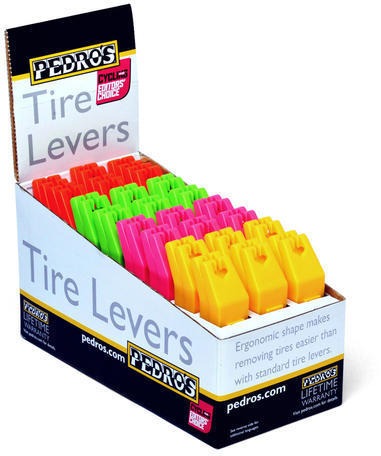 | 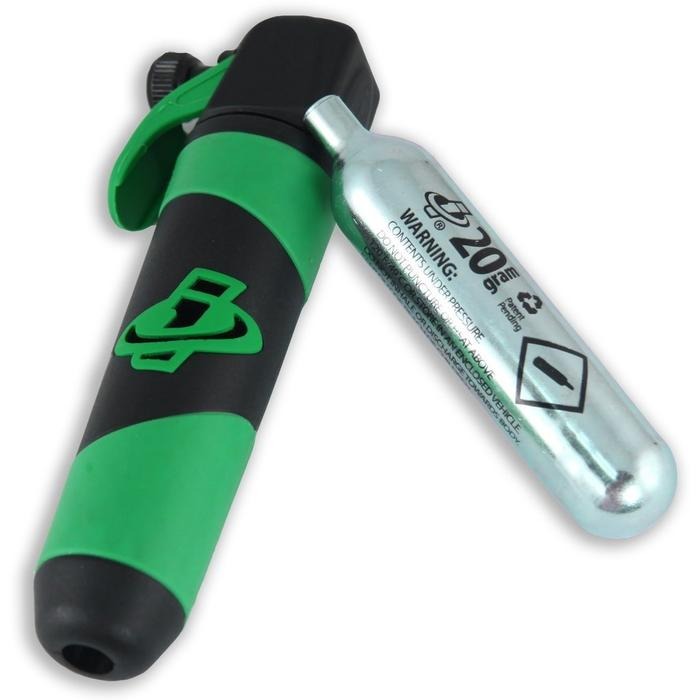 | 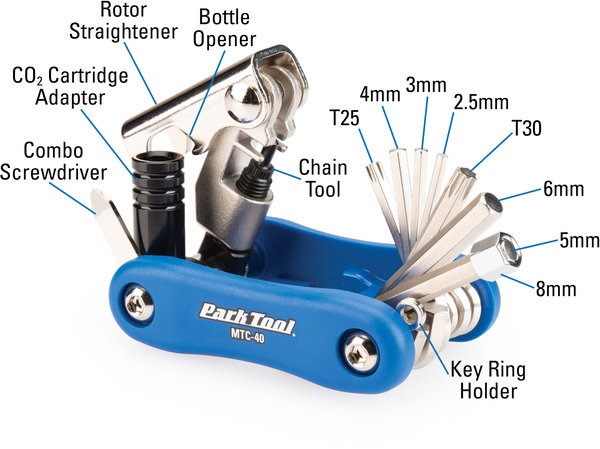 | 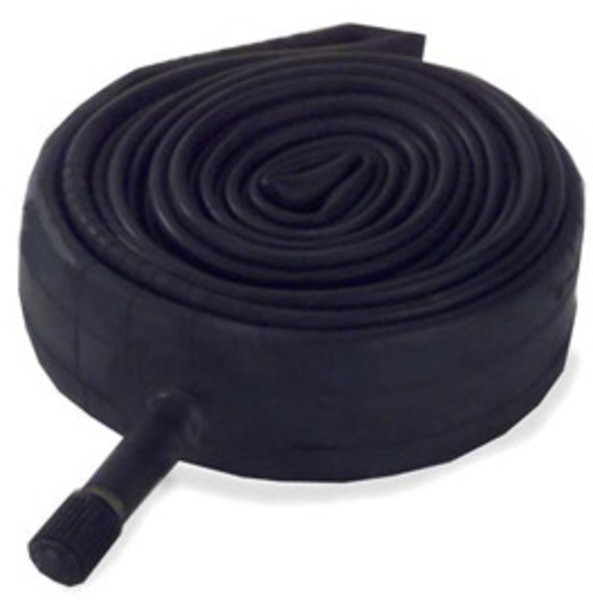 |
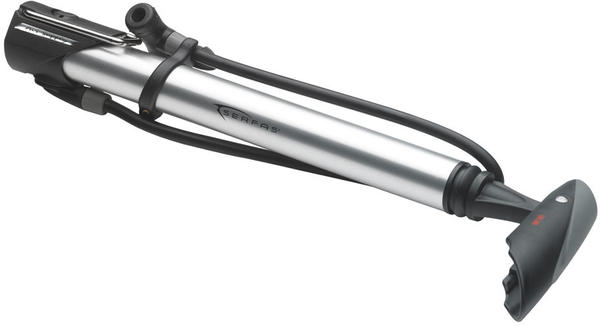 | 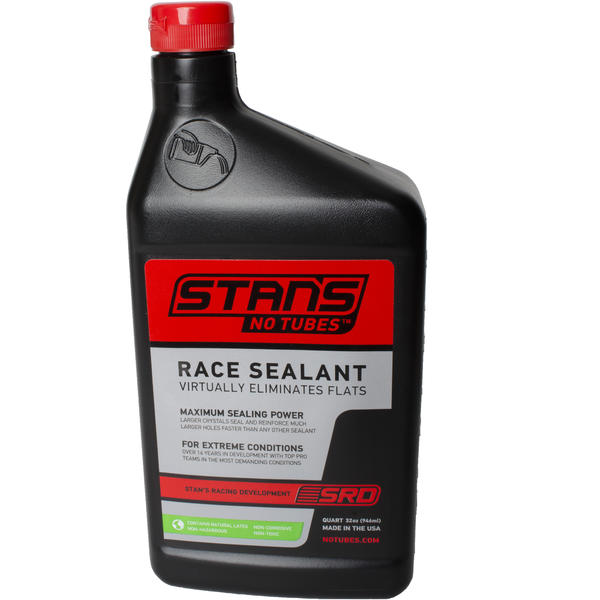 | 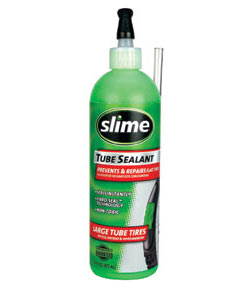 | 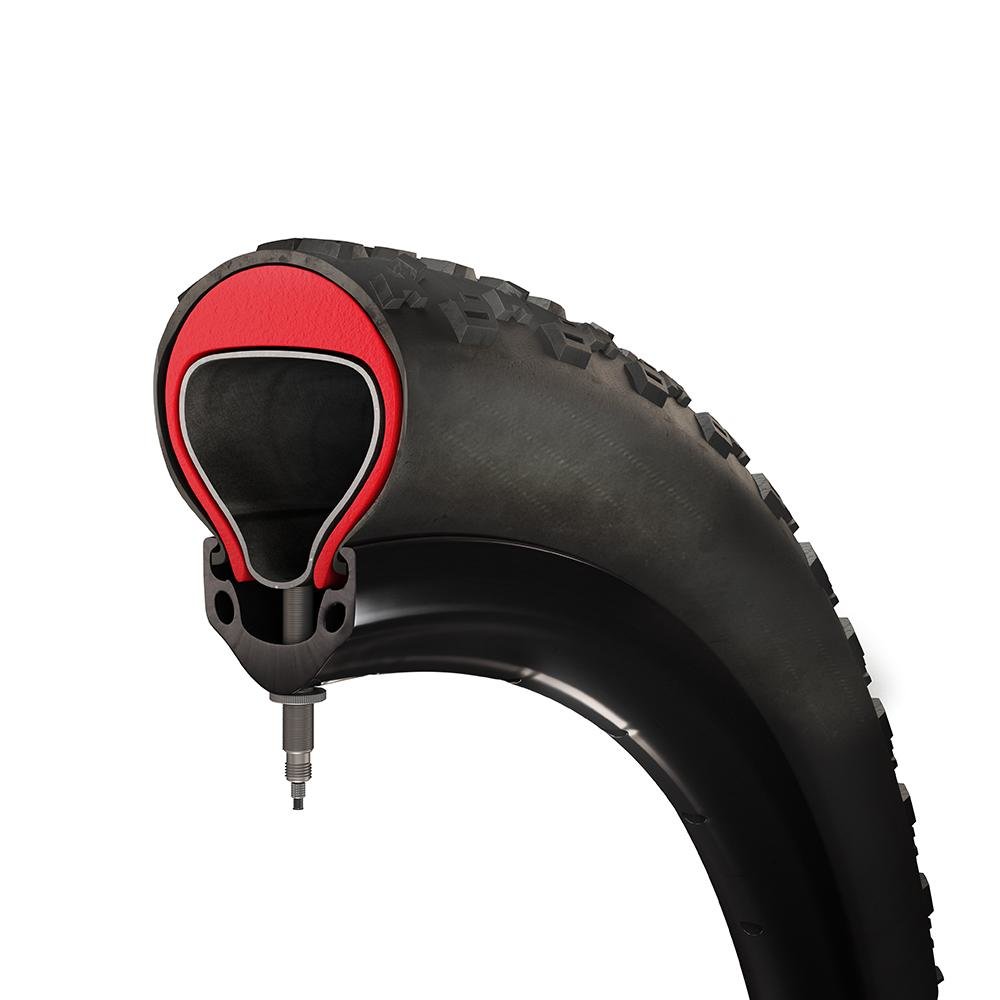 |
Heavy Duty. If you want to avoid most flats, Desert-Proofing your tires is a good investment. It provides three layers of protection, Slime tire sealant, a heavy duty tube, and a lightweight plastic liner. The Slime will seal any small punctures, the heavy duty tube works with the Slime to make a good barrier and better sealing and the liner guards against sharp objects. Our desert-proof option includes the Slime, tube, liner and installation. You may also do each choice by itself. Many customers simply add Slime, or Specialized Airlock, to the tube and that's it.
Tubeless. Alternately, if equipped for tubeless ready, going tubeless is exceptional. It's lighter and more reliable, especially for mountain biking. The only downside is you must have rims and tires that are made for holding a good bead and they do need to have the sealant refreshed every few months.
Lightweight Inserts. Just about any type of added protection from punctures adds to the weight of the tire and wheel. The lighter the tire, the more likely it will go flat. You must find a balance between protection and a heavy wheel. Also consider that the tire protects the rim from damage too. Light weight foam inserts, such as Tannus Armour, are a very popular choice because they don't add that much weight, allow for a natural ride and feel, and provide extra protection for the rim.
Have A Plan. No matter how you set things up, you still should have a backup plan in case you get a flat tire. Practice changing the tire at home so you are comfortable making a repair on the road. Be prepared.
Learn more: No More Flats
Emergency Preparedness
Emergency first aid kit for the road or mountain bike.
When you ride, especially in the desert, it's a good idea to think about first aid and survival. Here is a quick reference guide to help you assemble a good kit when you go out into the desert or a road ride:
- Water - plan at least one quart (32 ounces - about a liter) per hour, and have some for backup, in case you break down. Water bottles hold 16-24 ounces. A hydration pack can hold much more. Plan at least 50oz (1.3l) per hour in the AZ weather. (Archer's Bikes is a Shimano and Osprey dealer.)
- Have a snack in case you bonk - carbohydrates are better on the road than protein
- A cheap hair comb - used to help pull of cactus and spines (tweezers are good for the small stuff)
- Antiseptic spray, like Bactine©, to clean scrapes immediately (improves healing time, prevents infection)
- Several gauze pads (3") to clean wounds and cover them for the ride home
- Athletic tape to hold the gauze pad in place
- Sunscreen - small tube that can be used every hour or so
- Take along at least a lightweight windbreaker - you never know when a cloudburst might hit you or it just gets cold (be prepared)
- A repair kit (folding multi-tool, plastic ties, tire levers, spare tube, patches, pump and/or CO2 and $5 to give to someone that stops to help you)
- An emergency whistle and small red flag to signal for help
- Charged cell phone
- Your glasses or reading glasses
- Put everything in a gallon freezer bag to keep it all dry
 | 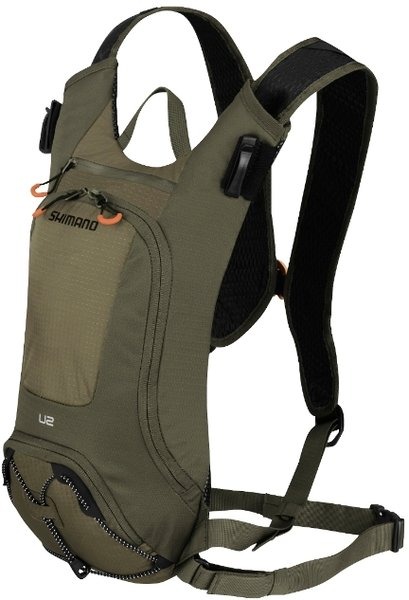 | 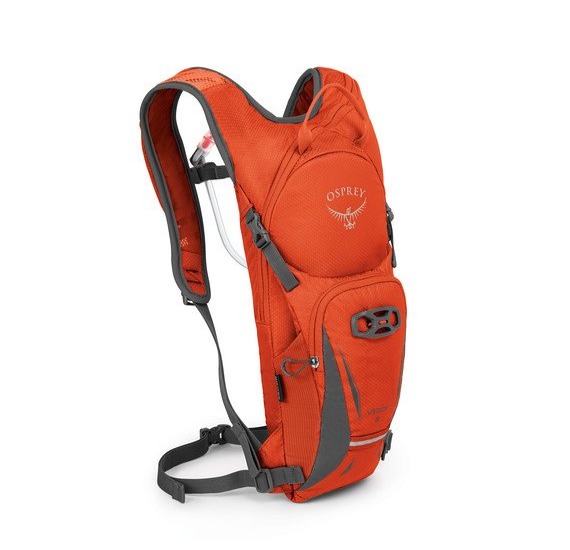 |
